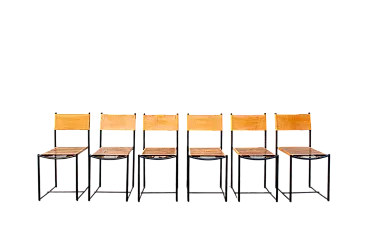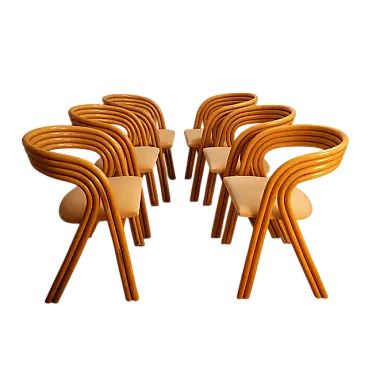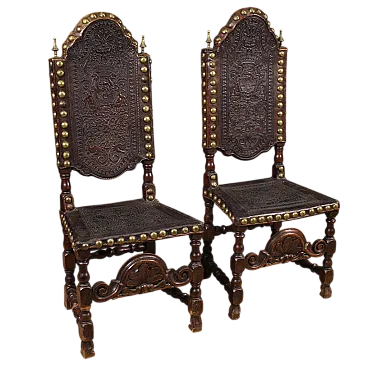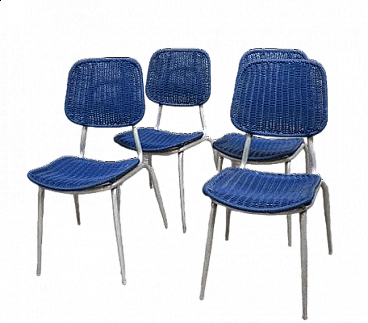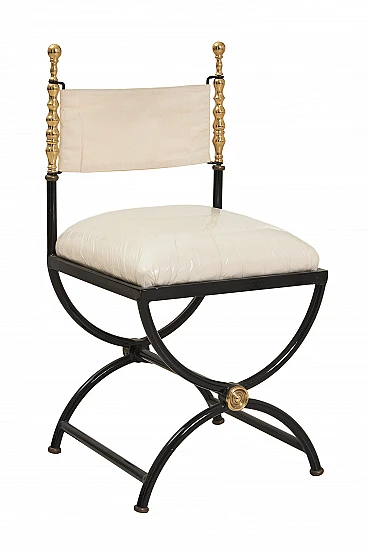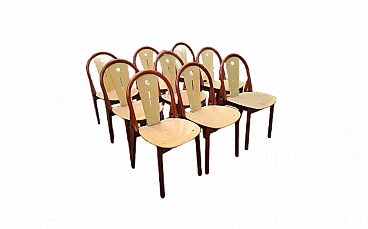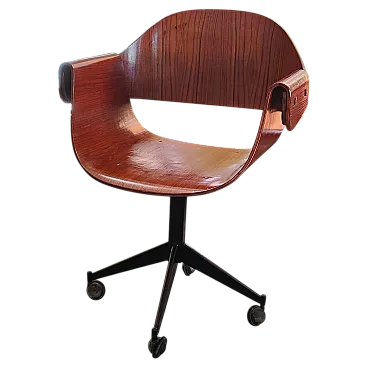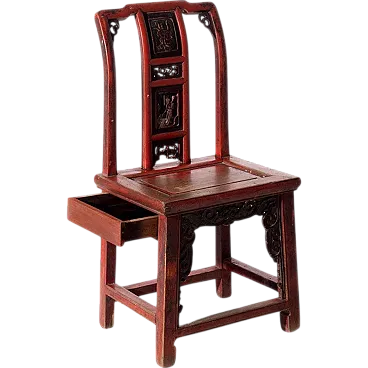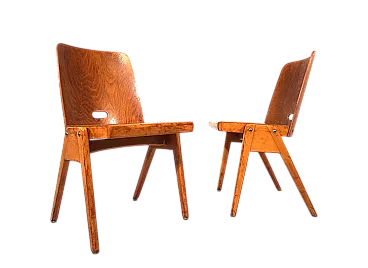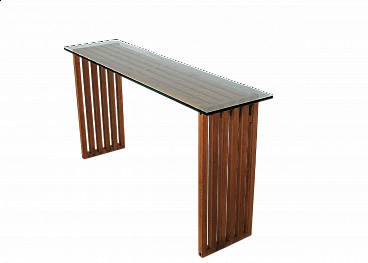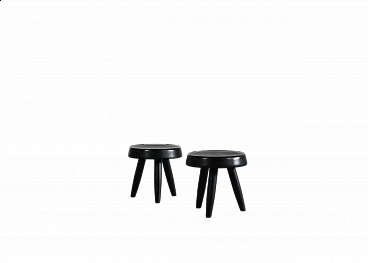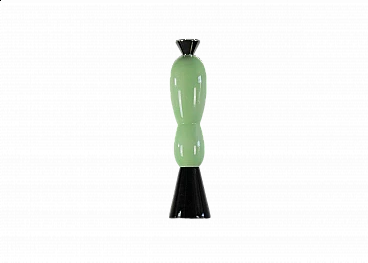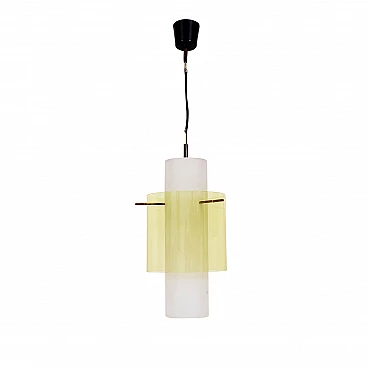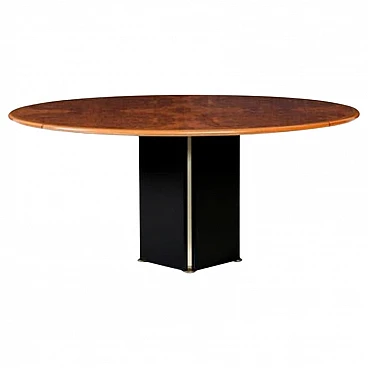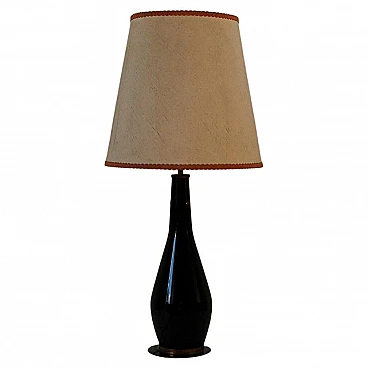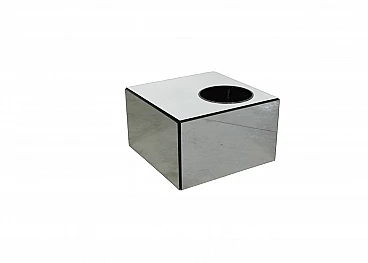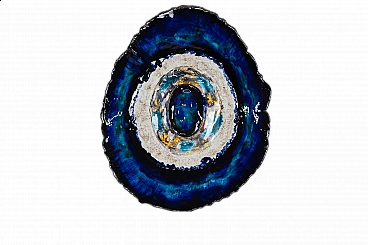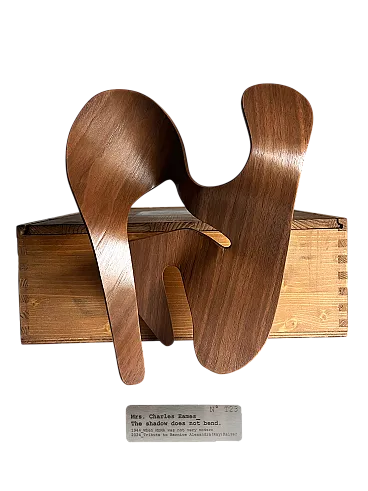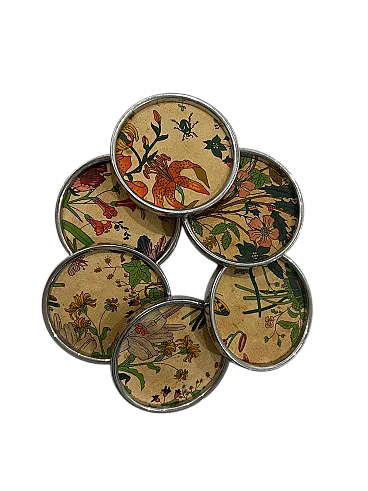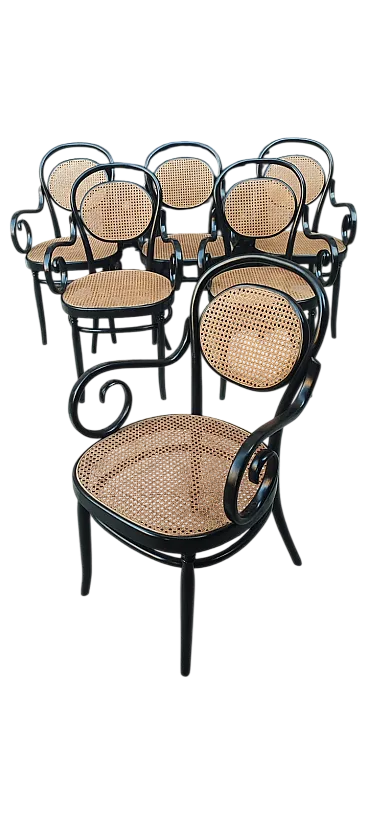A very rare set of six dining chairs made entirely of bentwood, designed by the Italian artist Sineo Gemignani and produced in Italy in the 1940s. The artist was born in Livorno on 30 July 1917, but around the early 1920s the family was forced to return to his father's birthplace (San Pantaleo near Vinci) because of his political activities that had attracted the attention of the fascists. Here, little Sineo was introduced to the study of art by his teacher Virgilio Gandi. The family then moved to Empoli, where Sineo spent the rest of his life and died prematurely on 22 May 1973.
Sineo Gemignani trained artistically at the Royal Art Institute of Porta Romana in Florence, where, in those years, important masters such as Libero Andreotti, Gianni Vagnetti, Pietro Parigi and Giuseppe Lunardi taught.
In those years, the Empolese painter Virgilio Carmignani was also a reference figure in the artist's training.
Entrusted to Carmignani's tutelage, Sineo began to frequent the group of Empolese painters, including Ghino Baragatti and Mario Maestrelli.
It was also during his time at the Art Institute that he developed a deep and fraternal friendship with Dilvo Lotti, a talented painter from San Miniato, a friendship that would only end with Sineo's death.
After finishing his studies, in 1939, he was drafted into the Italian Army, thus beginning a long period that would lead him to fight in the Balkans (1942). In August 1944, he took part in the liberation of Florence and in February 1945 he enlisted as a volunteer, taking part in the operations for the liberation of northern Italy with the Mantova Combat Group. These years are documented by numerous drawings and engravings that describe the tragic events in which he took part and testify to how his civil commitment intertwined with Sineo's artistic vocation. Between 1946 and 1949 he made short stays in Milan, where he collaborated with his friend Ghino Baragatti on the decoration of the atrium of the new cinema-auditorium in the Galleria Manzoni. During his stay in Milan, he came into contact with a stimulating climate, met painters and gallery owners and reflected on abstract currents, as several paintings from this period testify. But he felt that all this did not belong to him and took the path of realism. In the 1950s, Gemignani began the central decade of his activity as an artist and as a man, as he actively participated in the cultural and political life of Empoli. These are years of intense work, especially with the technique of mural painting and, in particular, in the form of the fresco torn and brought to the table. He took part in numerous collective exhibitions and artistic initiatives, obtaining awards and recognition.
In 1958, he also began teaching at the Art Institutes of Florence (1958-1960), Siena (1960-1964) and Pisa (1964-1973) where he taught life drawing. He took part in various competitions for public works.
In the following decade, he devoted himself to researching new expressive techniques, particularly in the field of engraving, practising mainly portraits. In painting, on the other hand, he moved more and more towards the observation of everyday life, even in its most modern aspects. Works centred on sport, caricature portraits and life on the beach took shape.
In the last phase of his life, he devoted himself in particular to a project with a chivalrous subject. In the second half of the 1960s, he began the preparatory study for a large fresco for the decoration of the living room of a private home. The subject chosen was taken from a heroic poem by Ippolito Neri entitled La Presa di San Miniato. Of the project, which remained unfinished due to Sineo's death, the preparatory cartoon for the fresco and numerous drawings remain, which were used to paint the last of his wall paintings, The Battle of Montaperti in 1971, commissioned by the Circolo Farinata degli Uberti of Empoli. In 1974, the first retrospective exhibition dedicated to Sineo Gemignani was held at the Palazzo delle Esposizioni in Empoli.
In 1995, the artist's personal exhibition was inaugurated at the Convent and Church of Santo Stefano degli Agostiniani in Empoli, which constituted an important moment of critical reflection on his artistic production.

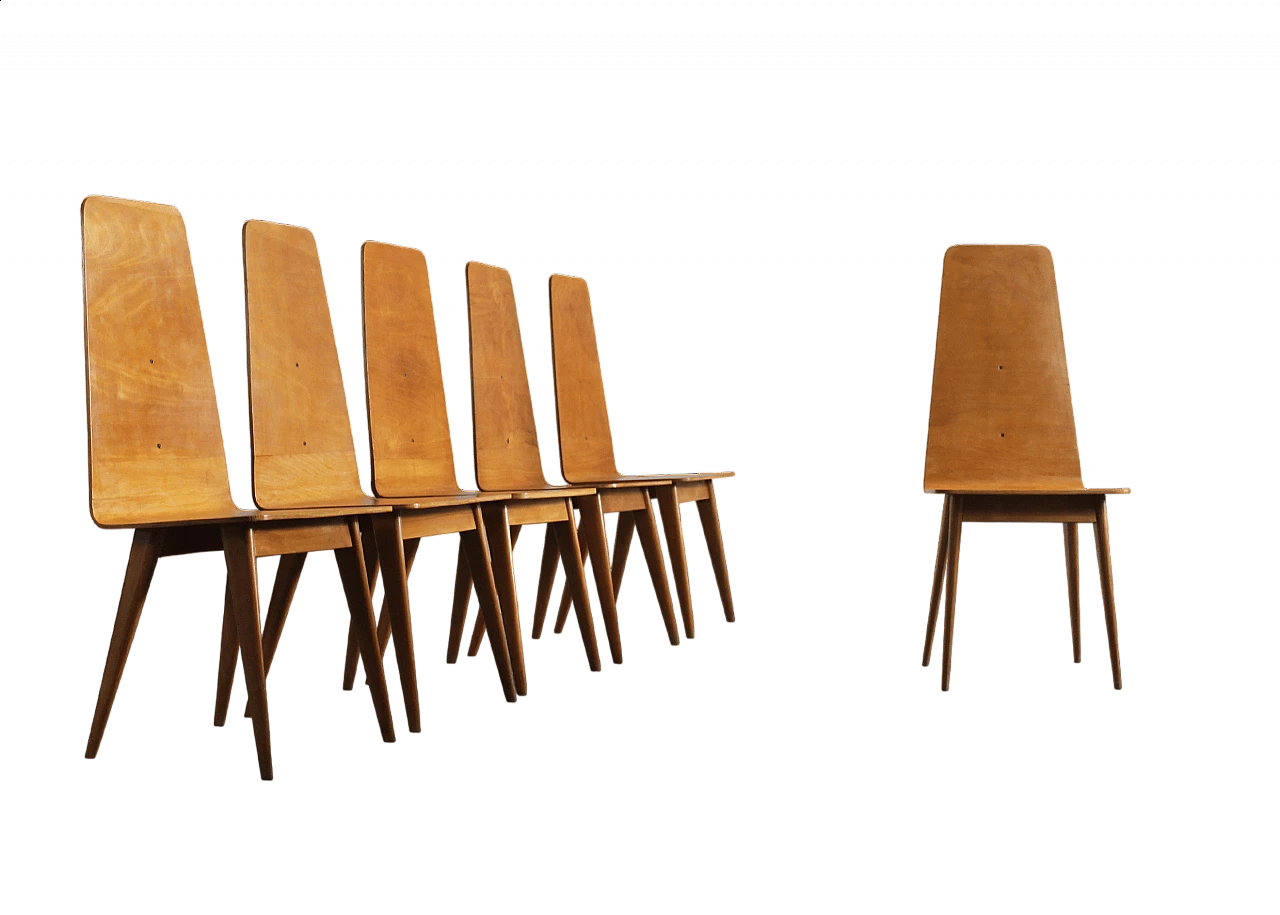
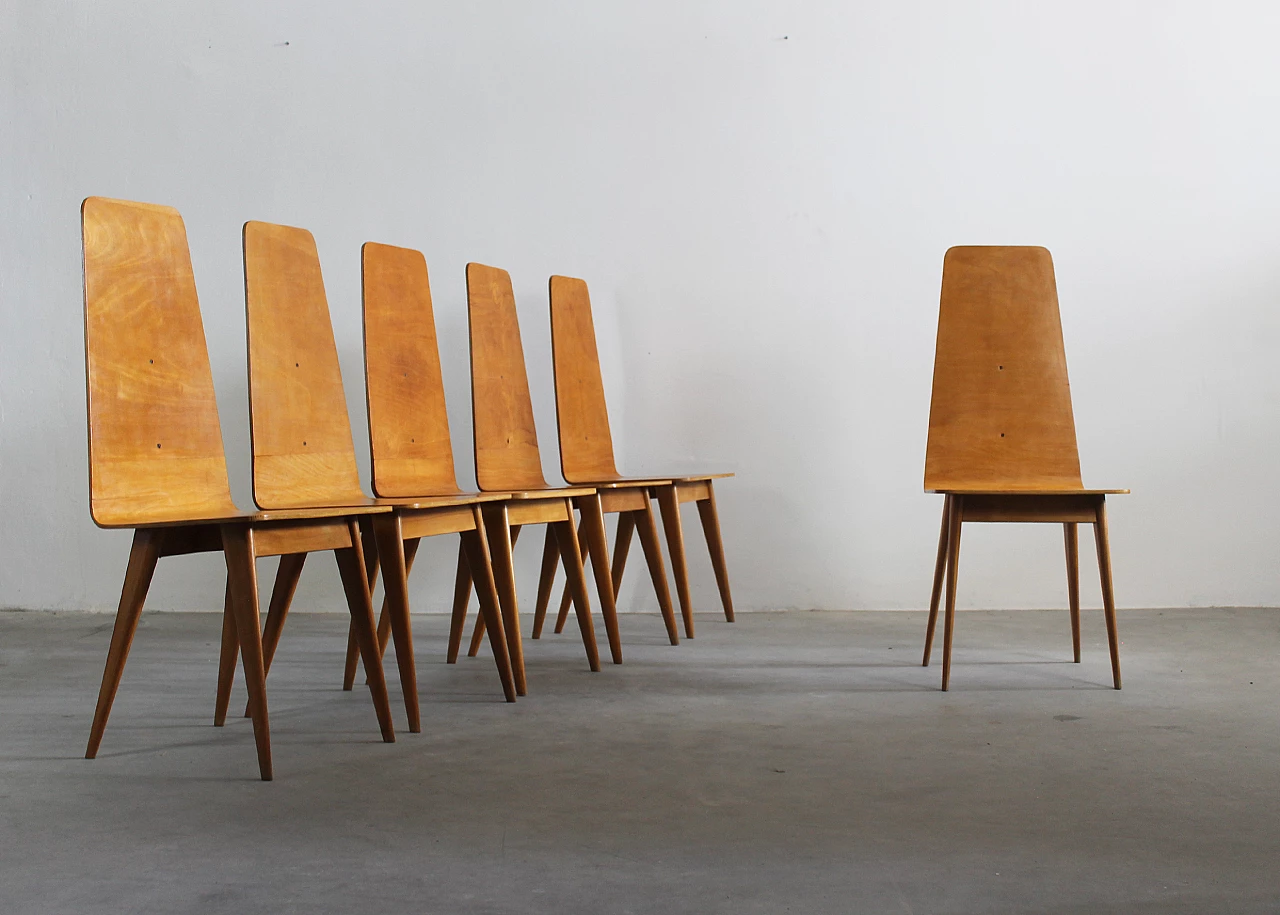
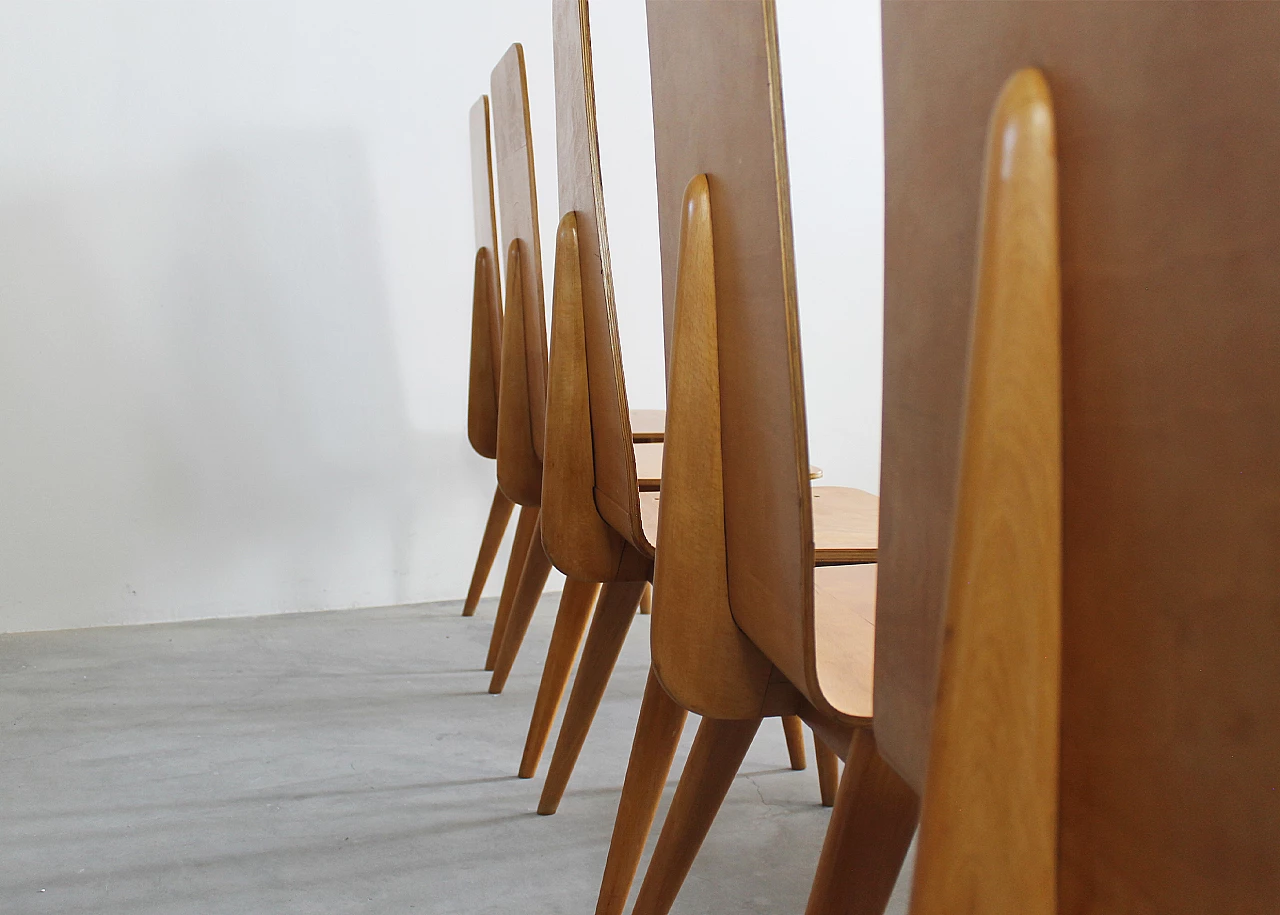
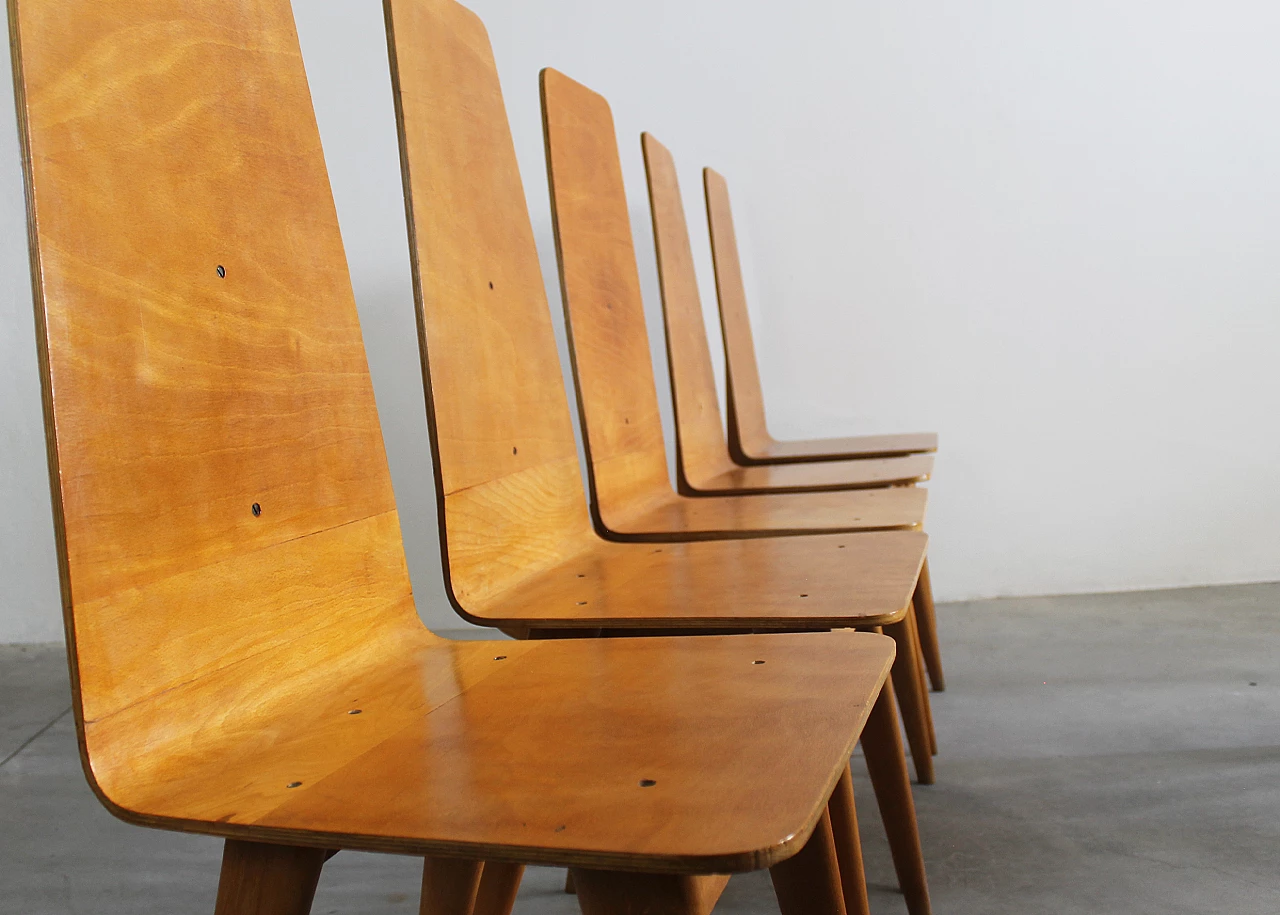
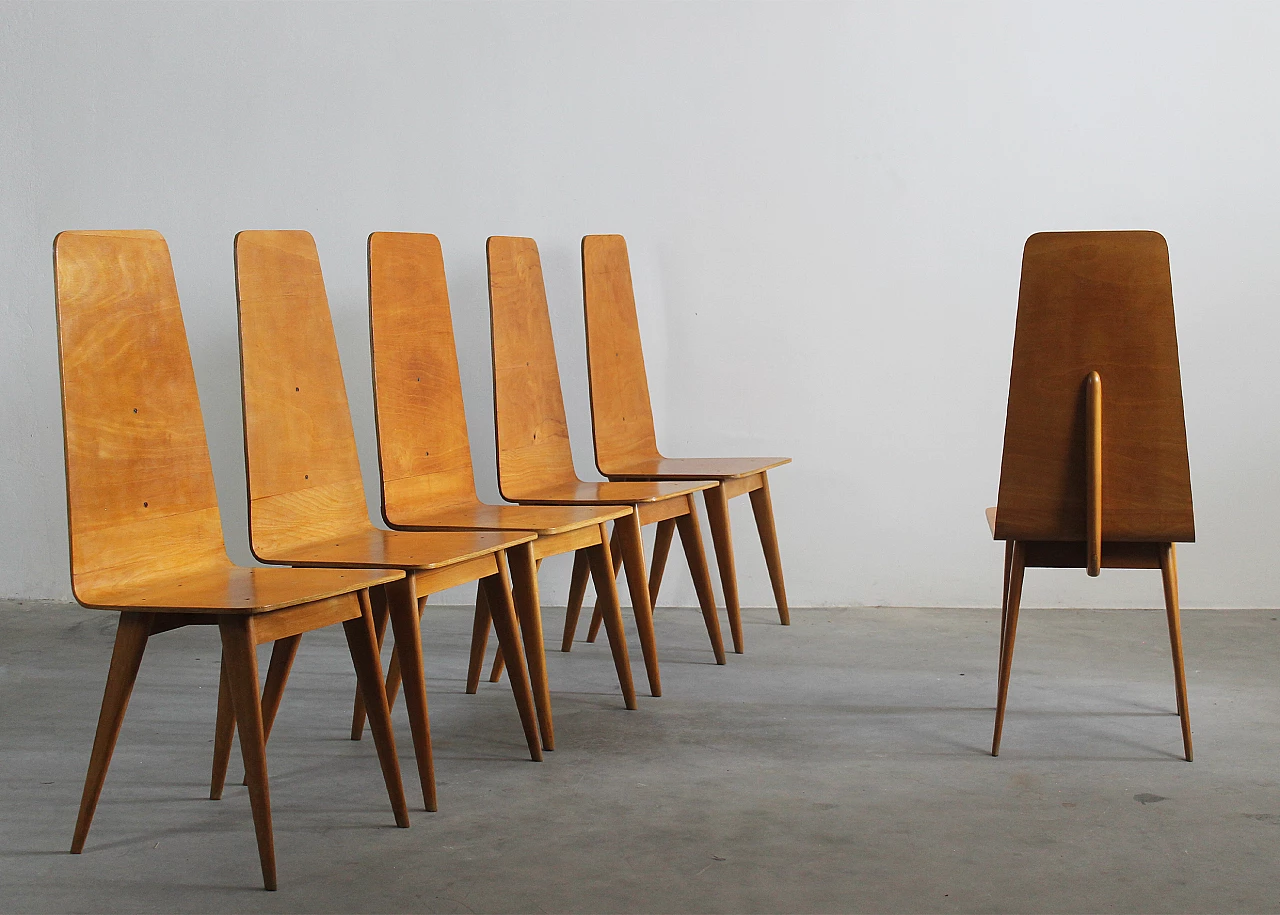
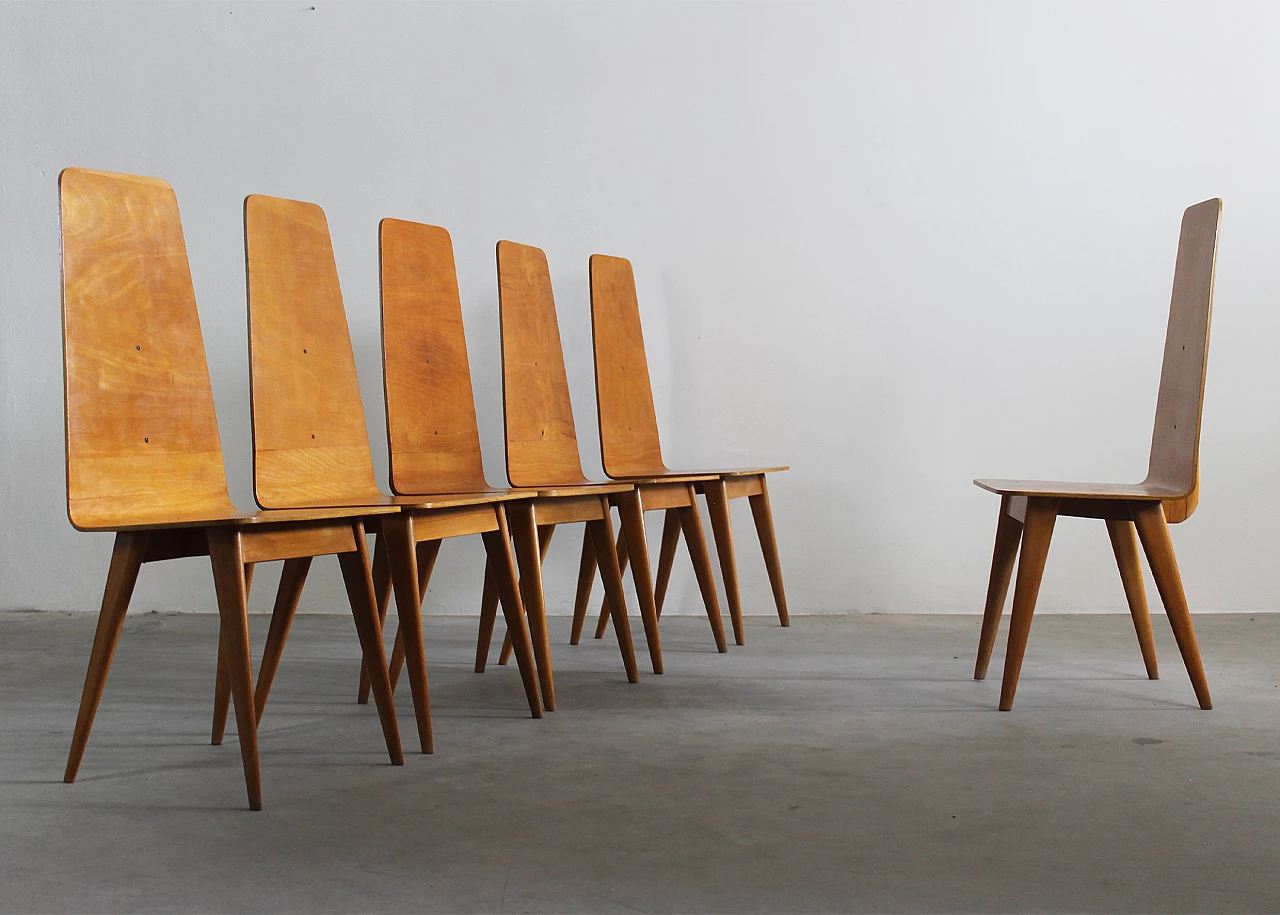
 SILVER Seller in Pistoia, Italy
SILVER Seller in Pistoia, Italy






.png)





